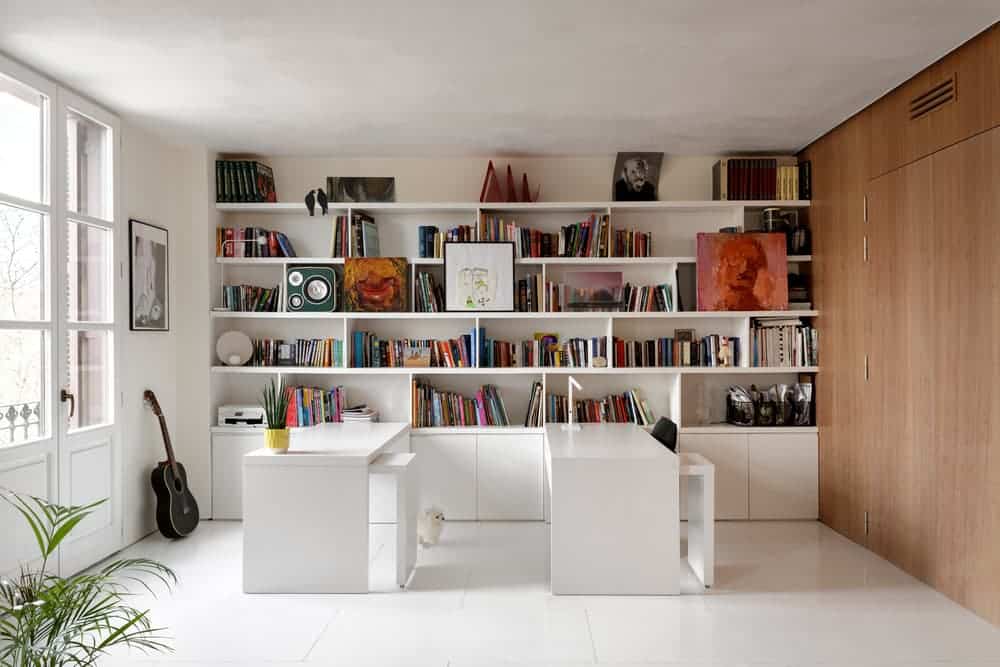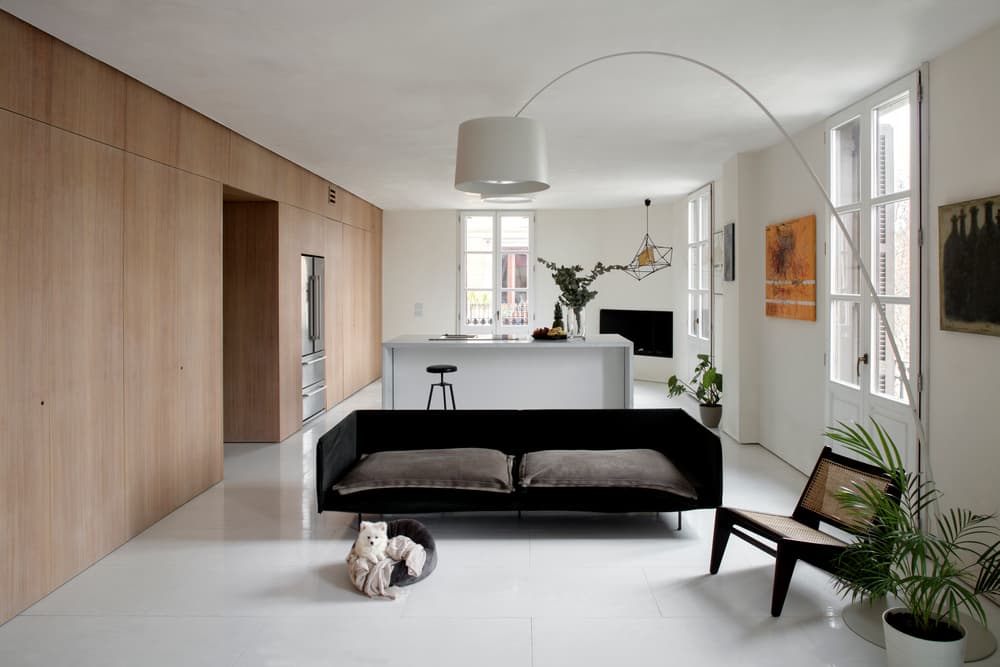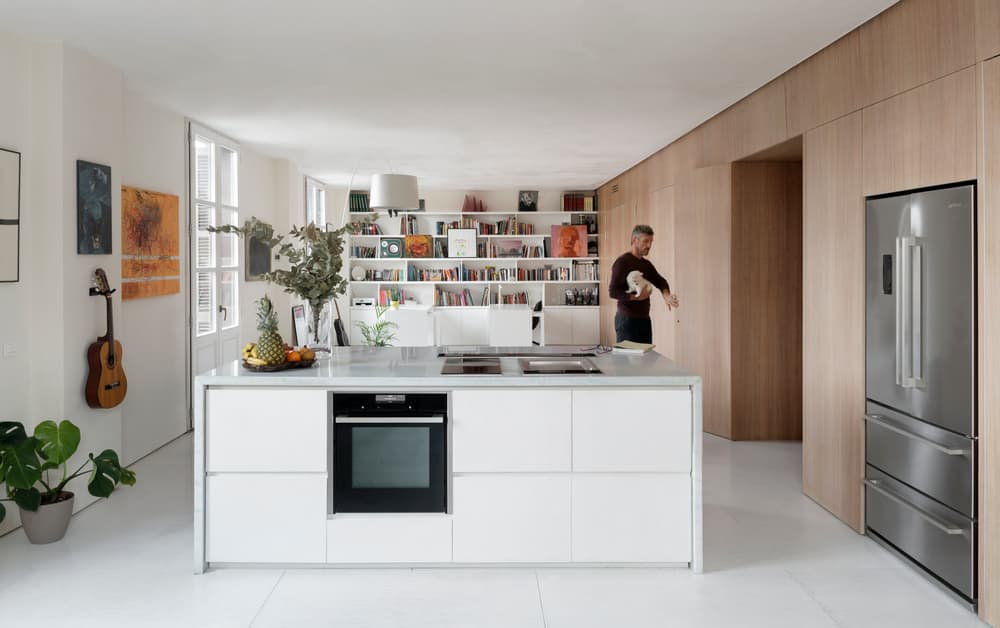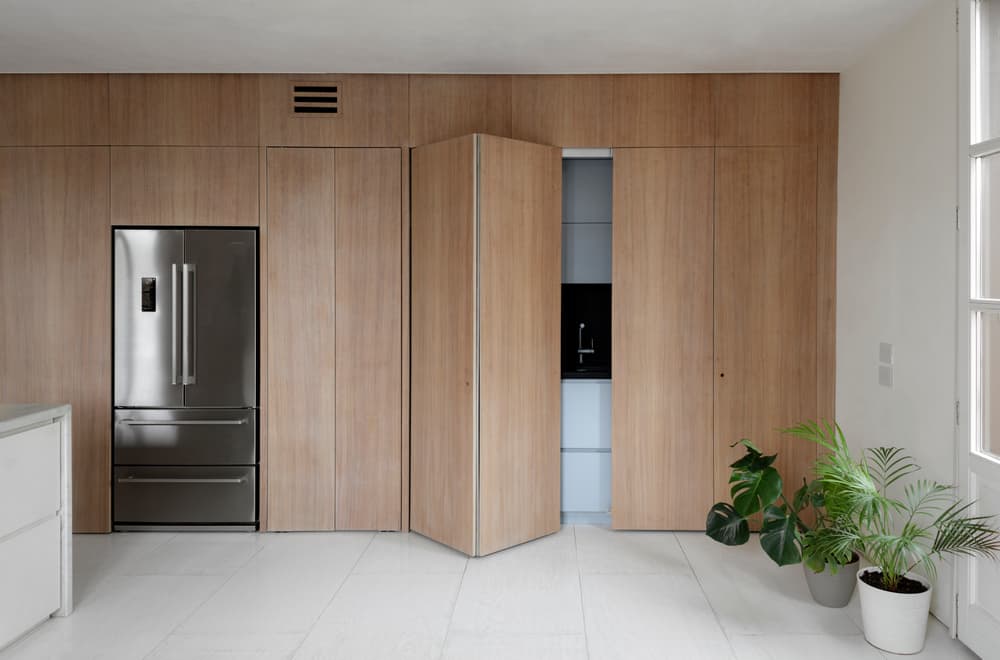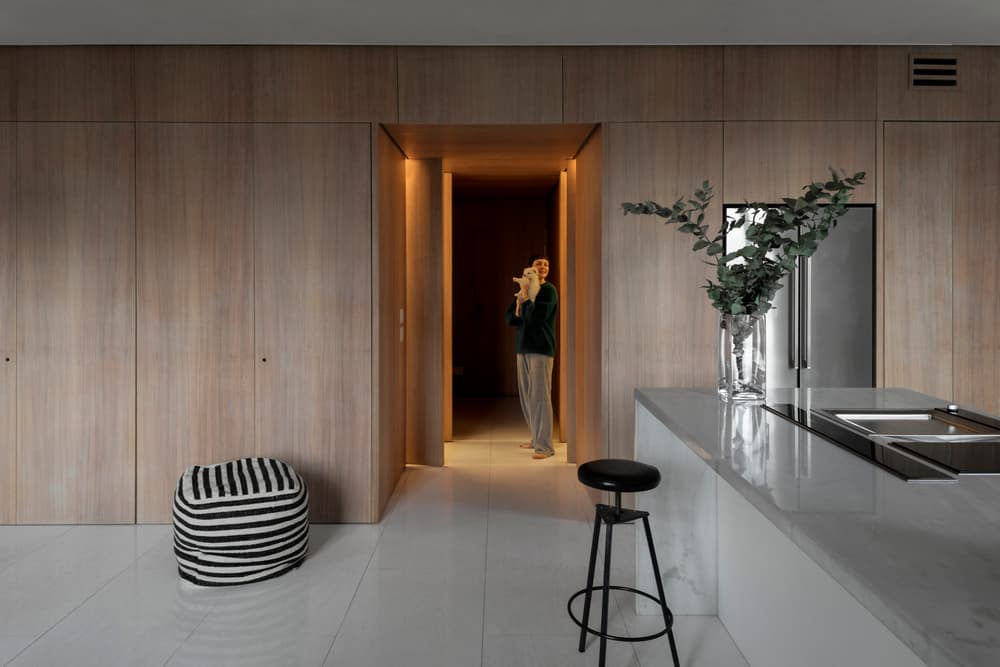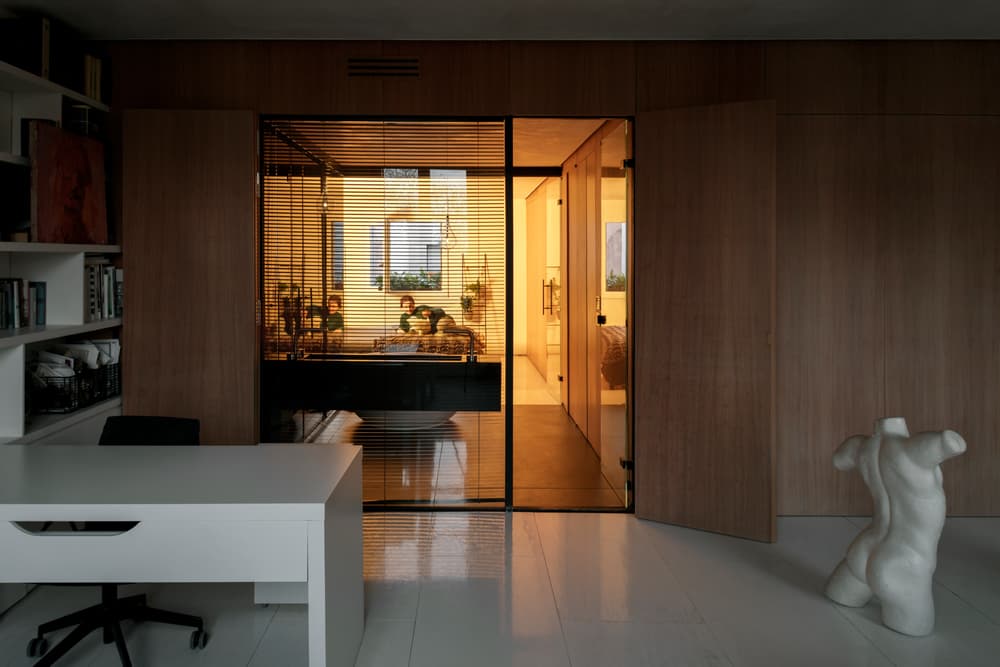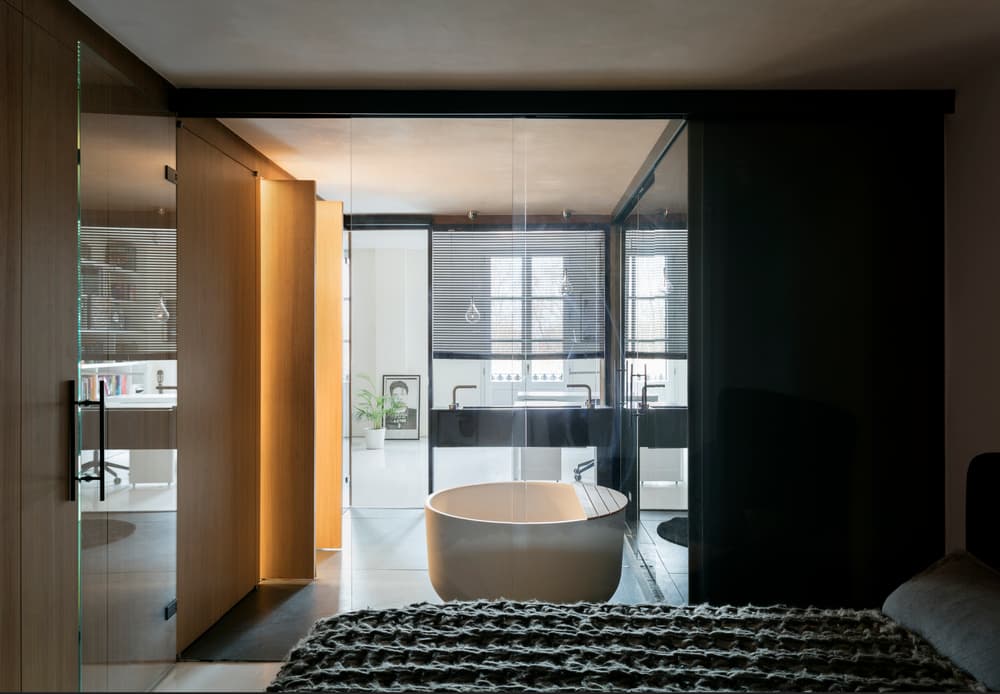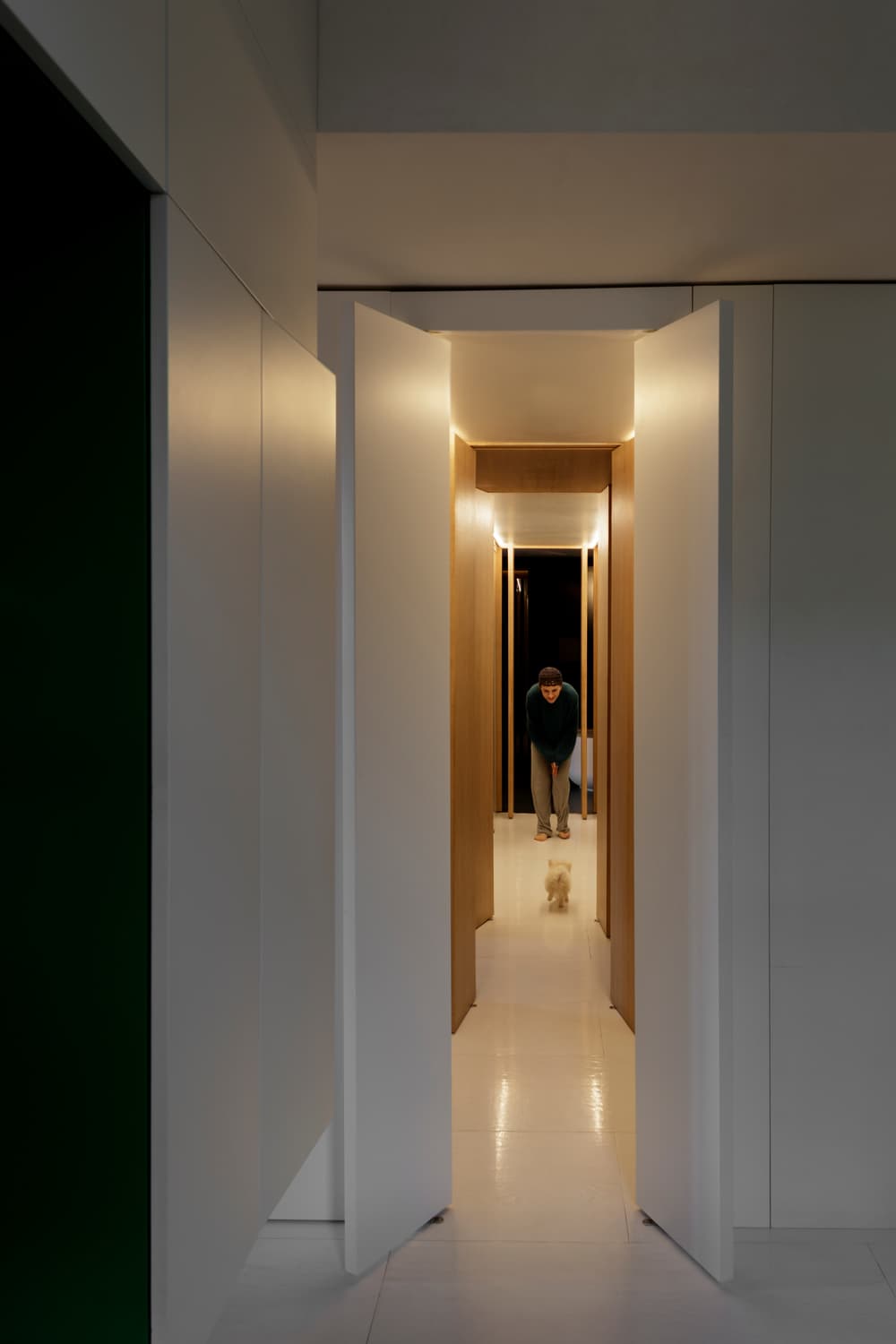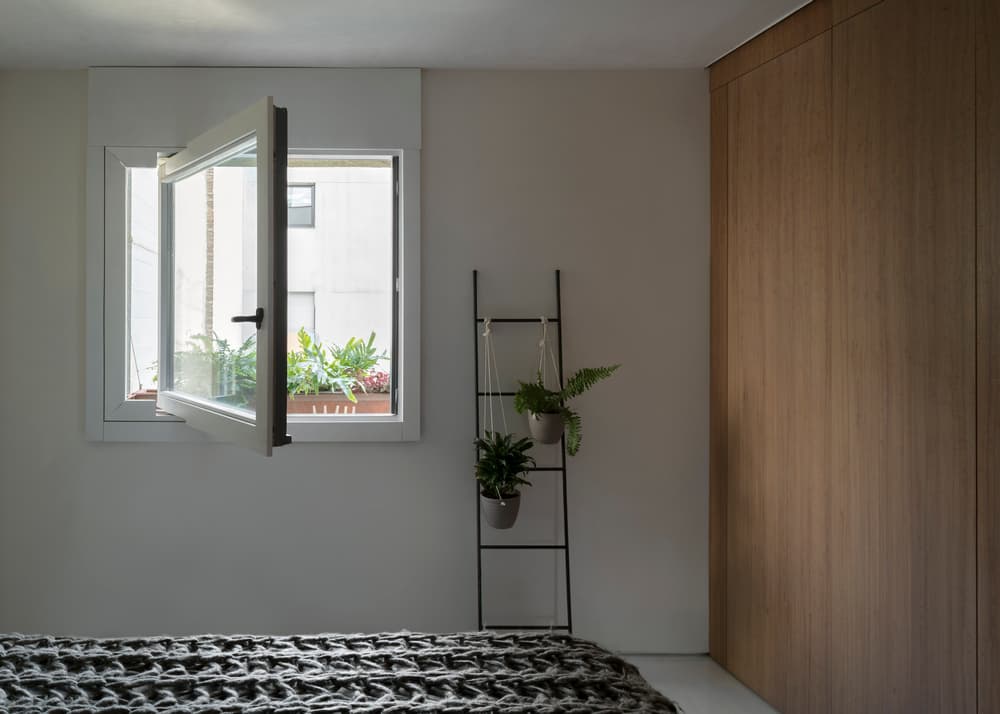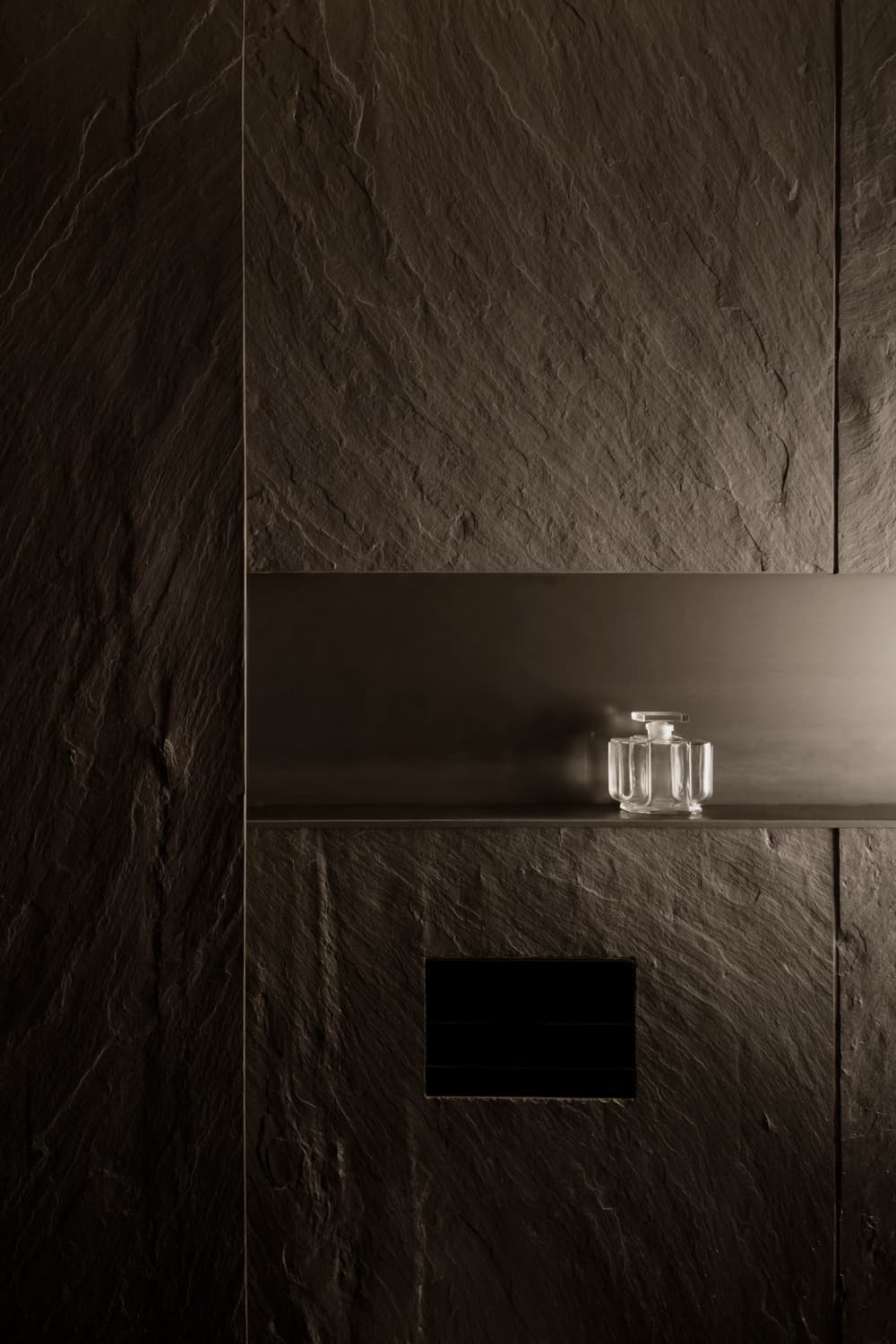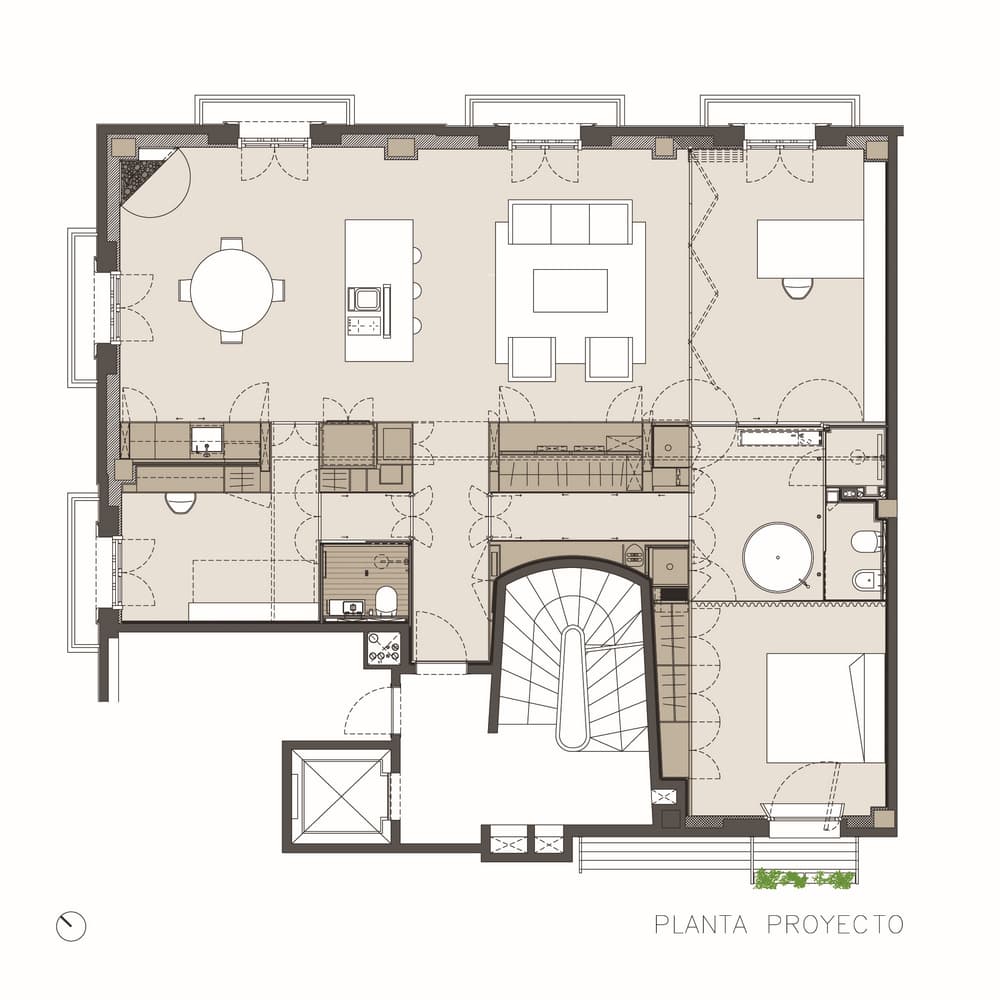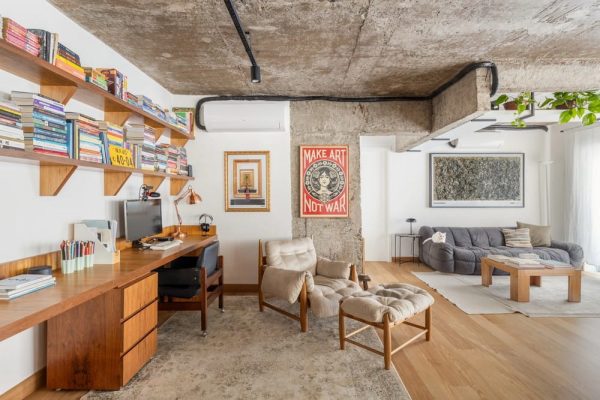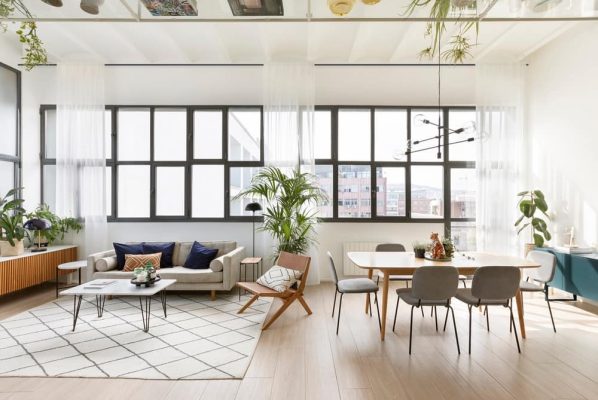Project: Apartment k+t / Passive Rehabilitation
Architects: Elisabetta Quarta Colosso, El Fil Verd estudi d’arquitectura + Antoni Millson, Element Architecture Urbanism ltd
Location: El Born, Barcelona, Catalonia, Spain
Surface: 128 sqm
Year: 2020
Photography: Milena Villalba
Energy calification: A
(heating demand: 44.55 KWh/sqm per year, cooling demand: 0.12 KWh/sqm per year; CO2 production: 5.81 KgCO2/sqm)
Introduction
The apartment is located in a historic building with a privileged position in El Born, a neighborhood of Barcelona that was the epicenter of the commercial life of the city between the 13th and 15th centuries. The main facade of the building enjoys spectacular views towards a tree-lined promenade and the Ciudadela park. The Clients, a young couple with two children, ask us to transform the existing interior into a dynamic, flexible space adapted to their lifestyle. Our proposal is committed to highlighting the characteristics of the interior space, putting them in relation to the urban context.
Project details
Despite being protected by Cultural Assets, the building where the apartment is located was completely rebuilt in 1996, keeping only the exterior facades intact. The structure currently consists of reinforced concrete slabs and pillars and ceramic brick exterior walls.
Our first action consisted in emptying the space, eliminating all non-biocompatible materials, such as the polystyrene projected inside the walls.
The new distribution is articulated by zones of use: the filter area of the entrance, the private space of the bedrooms and the common area, which occupies almost half of the total space. The areas are designed in a flexible way, the east part of the house can be separated from the rest, becoming an independent spatial unit. The central space can be modified throughout the day according to the needs of the family: the study, the living area and the kitchen are related to the rest of the rooms by closing and opening doors and mobile panels.
The chosen materials respond to criteria of aesthetics, biocompatibility, quality and durability.
The housing envelope has been considered as the thickest skin that separates it from the outer space. The internal face of the exterior walls has been overlaid with hemp and lime fibers that insulate thermally and acoustically from the outside. Wood fiber panels have been used for the dividing walls and the ceiling. The finish of the entire interior surface is a lime plaster and marble dust.
Eucalyptus frize wood panels separate the different spaces. White lacquered industrial pine boards have been used for the floor.
Natural stone or marble have been used for cladding in wet areas. The suite’s sink is lined with black slate, which thanks to its irregular texture absorbs light, providing a relaxing atmosphere and soft luminosity.
The new configuration of the spaces has completely changed the relationship of the house with the context. The common rooms are now on the north-east façade with views towards a tree-lined promenade thanks to which they enjoy maximum privacy.
The bedrooms enjoy their privacy as they are located at the two opposite ends of the house and separated by the respective dressing rooms. The entrance, intentionally warm and welcoming, projects the visitor into the spacious and bright space of the living room.
Technical explanations (bioclimatic strategies)
Taking into account the Mediterranean climate, the air conditioning of the house adopts passive and active bioclimatic strategies. The objective is to minimize the energy expenditure of electrical and air conditioning installations by implementing strategies that do not require energy consumption.
Passive Rehabilitation – Passive strategies
The insulation of the entire enclosure, including the ceiling and floor, makes it possible to maintain a constant interior temperature throughout the year. In winter the solar contribution through the openings reduces the consumption of the air conditioning equipment. In summer the wooden blinds work as solar protection and favor natural cross ventilation between the two ends of the house.
On all balconies, an automatic irrigation system offers the possibility of creating small, high-density green spaces. In summer the balcony plants filter the air that reaches the interior with a reduced temperature. An osmosis filter has been installed in the kitchen that allows tap water to be used for drinking and cooking. In the south-facing window of the suite, an ingenious flowery clothesline allows plants to filter the solar rays during the summer.
Active strategies
The air conditioning of the house has highly efficient machines. Heating and cooling are achieved through underfloor heating with water that works in a hot and cold regime.
By requiring low temperatures to operate in winter, high performance is obtained against minimal energy costs. In summer the same floor cools the house with the support of a dehumidification system. Indoor air is constantly monitored and purified. A heat exchanger reuses the heat or cold of the exhaust air to transfer it to the air coming from the outside.
Hemp insulation: Hemp Eco Systems
Wooden Fiber insulation: Gutex
Marbles: Marbres Rodón
Wooden Furniture: Roca Fusters, Xavi Contijoch Fusteria
Blacksmiths: Frank Hübner, Vitraltech s.l.
Glasses: Vidres Claror
Facilities: Matthias Osht
Lighting and home automation: Vitrum Lighting System

